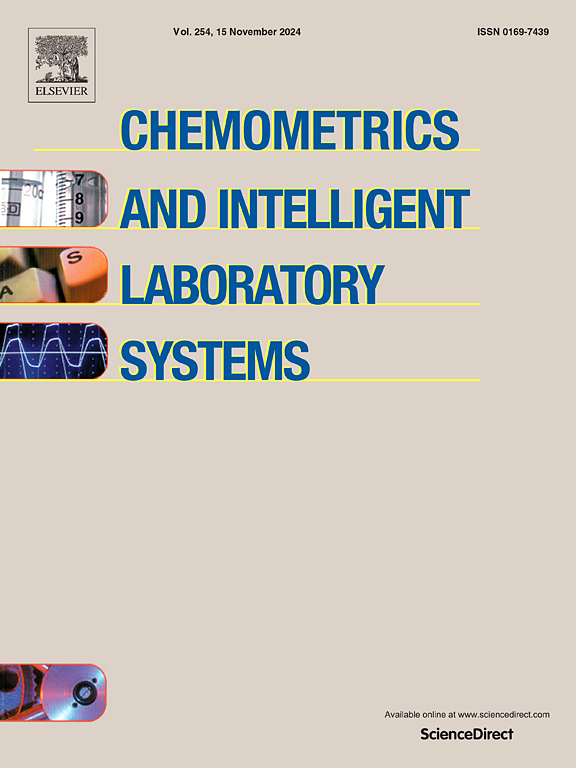Functionality of rotational ambiguity in self-modeling methods to signal contribution of chemical components
IF 3.8
2区 化学
Q2 AUTOMATION & CONTROL SYSTEMS
Chemometrics and Intelligent Laboratory Systems
Pub Date : 2025-04-26
DOI:10.1016/j.chemolab.2025.105410
引用次数: 0
Abstract
Self-modeling curve resolution (SMCR) methods are widely acknowledged as potent tool in chemometrics, facilitating the decomposition of bilinear data matrices into chemically interpretable matrices. Nonetheless, these methods frequently yield results with ambiguities, particularly rotational ambiguity, leading to non-uniqueness of outcomes. This study investigates the influence of signal contributions of chemical components on rotational ambiguity. Utilizing simulated data from HPLC-DAD and one real excitation emission fluorescence data, the impacts of signal contributions of chemical components on spectral and concentration profiles are assessed. The findings illustrate that increasing the signal contribution of a chemical component can mitigate rotational ambiguity. Furthermore, the efficacy of employing second-order standard addition in reducing rotational ambiguity and enhancing the accuracy of quantitative analyses is examined.
自建模方法中旋转模糊对化学成分信号贡献的功能
自建模曲线解析(SMCR)方法被广泛认为是化学计量学中强有力的工具,有助于将双线性数据矩阵分解为化学可解释的矩阵。尽管如此,这些方法经常产生歧义的结果,特别是旋转歧义,导致结果的非唯一性。本研究探讨了化学成分的信号贡献对旋转模糊度的影响。利用HPLC-DAD模拟数据和一个真实激发发射荧光数据,评估了化学成分的信号贡献对光谱和浓度分布的影响。研究结果表明,增加化学成分的信号贡献可以减轻旋转模糊。此外,采用二阶标准加法在减少旋转模糊和提高定量分析的准确性方面的有效性进行了检验。
本文章由计算机程序翻译,如有差异,请以英文原文为准。
求助全文
约1分钟内获得全文
求助全文
来源期刊
CiteScore
7.50
自引率
7.70%
发文量
169
审稿时长
3.4 months
期刊介绍:
Chemometrics and Intelligent Laboratory Systems publishes original research papers, short communications, reviews, tutorials and Original Software Publications reporting on development of novel statistical, mathematical, or computer techniques in Chemistry and related disciplines.
Chemometrics is the chemical discipline that uses mathematical and statistical methods to design or select optimal procedures and experiments, and to provide maximum chemical information by analysing chemical data.
The journal deals with the following topics:
1) Development of new statistical, mathematical and chemometrical methods for Chemistry and related fields (Environmental Chemistry, Biochemistry, Toxicology, System Biology, -Omics, etc.)
2) Novel applications of chemometrics to all branches of Chemistry and related fields (typical domains of interest are: process data analysis, experimental design, data mining, signal processing, supervised modelling, decision making, robust statistics, mixture analysis, multivariate calibration etc.) Routine applications of established chemometrical techniques will not be considered.
3) Development of new software that provides novel tools or truly advances the use of chemometrical methods.
4) Well characterized data sets to test performance for the new methods and software.
The journal complies with International Committee of Medical Journal Editors'' Uniform requirements for manuscripts.

 求助内容:
求助内容: 应助结果提醒方式:
应助结果提醒方式:


